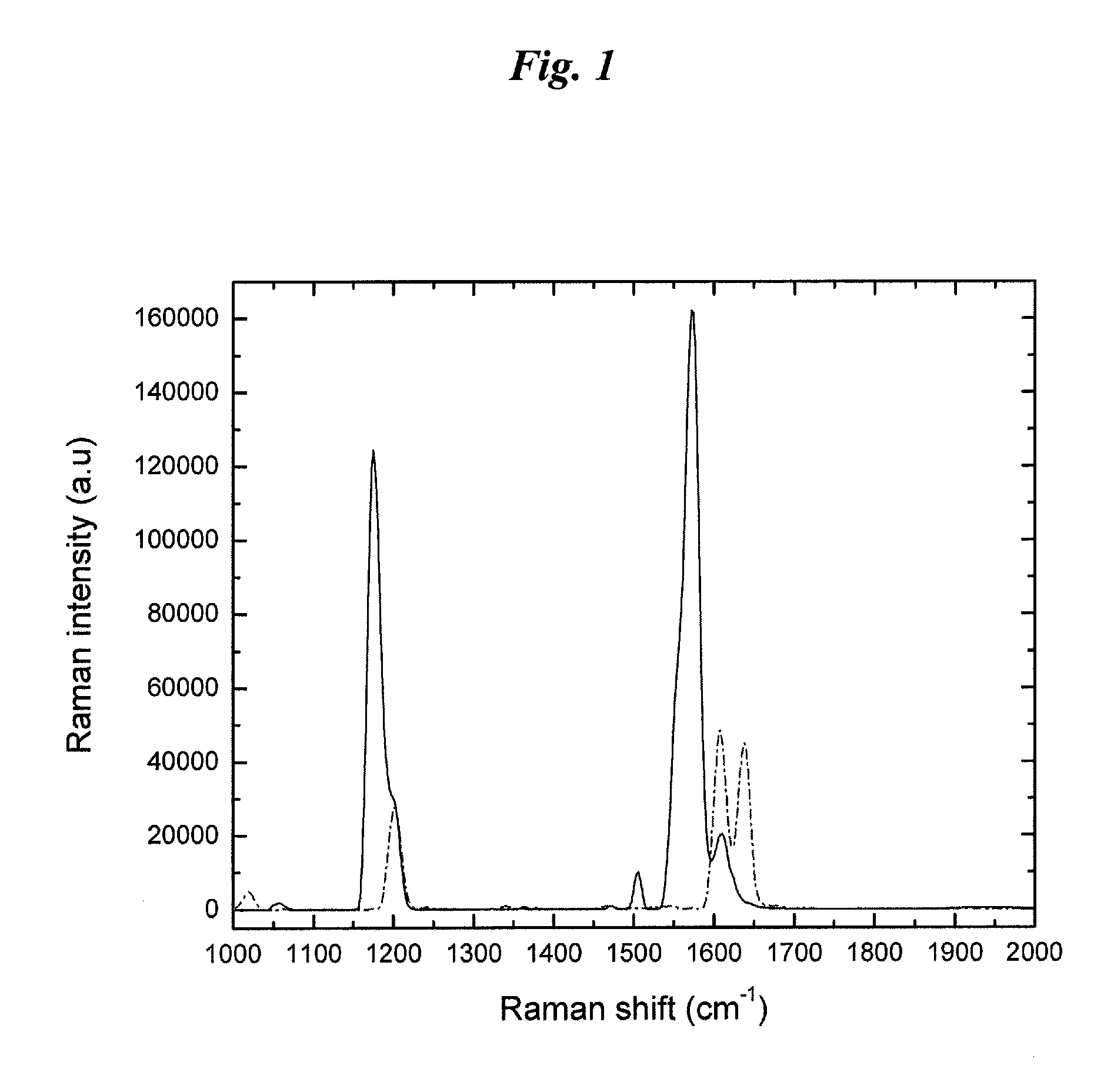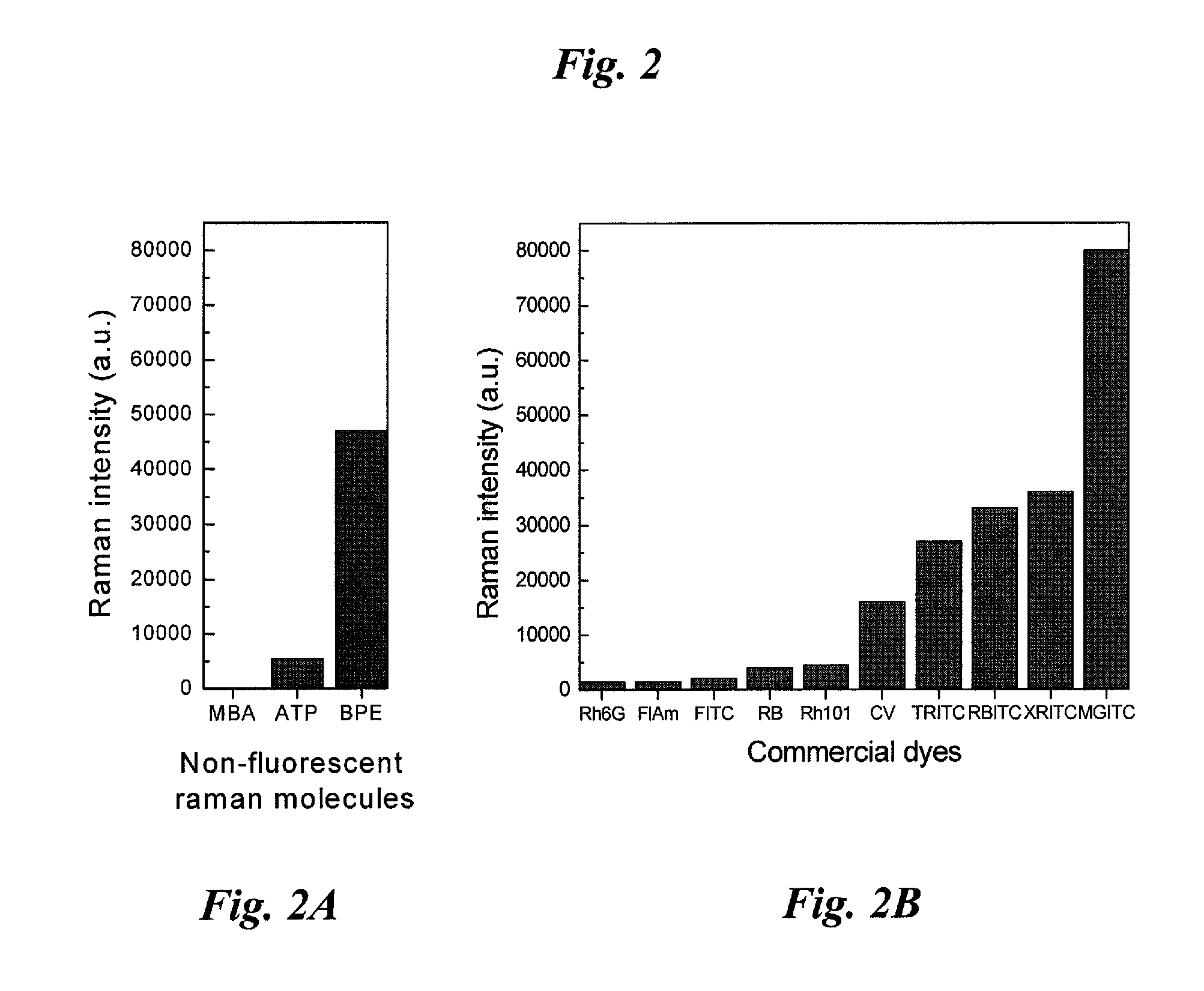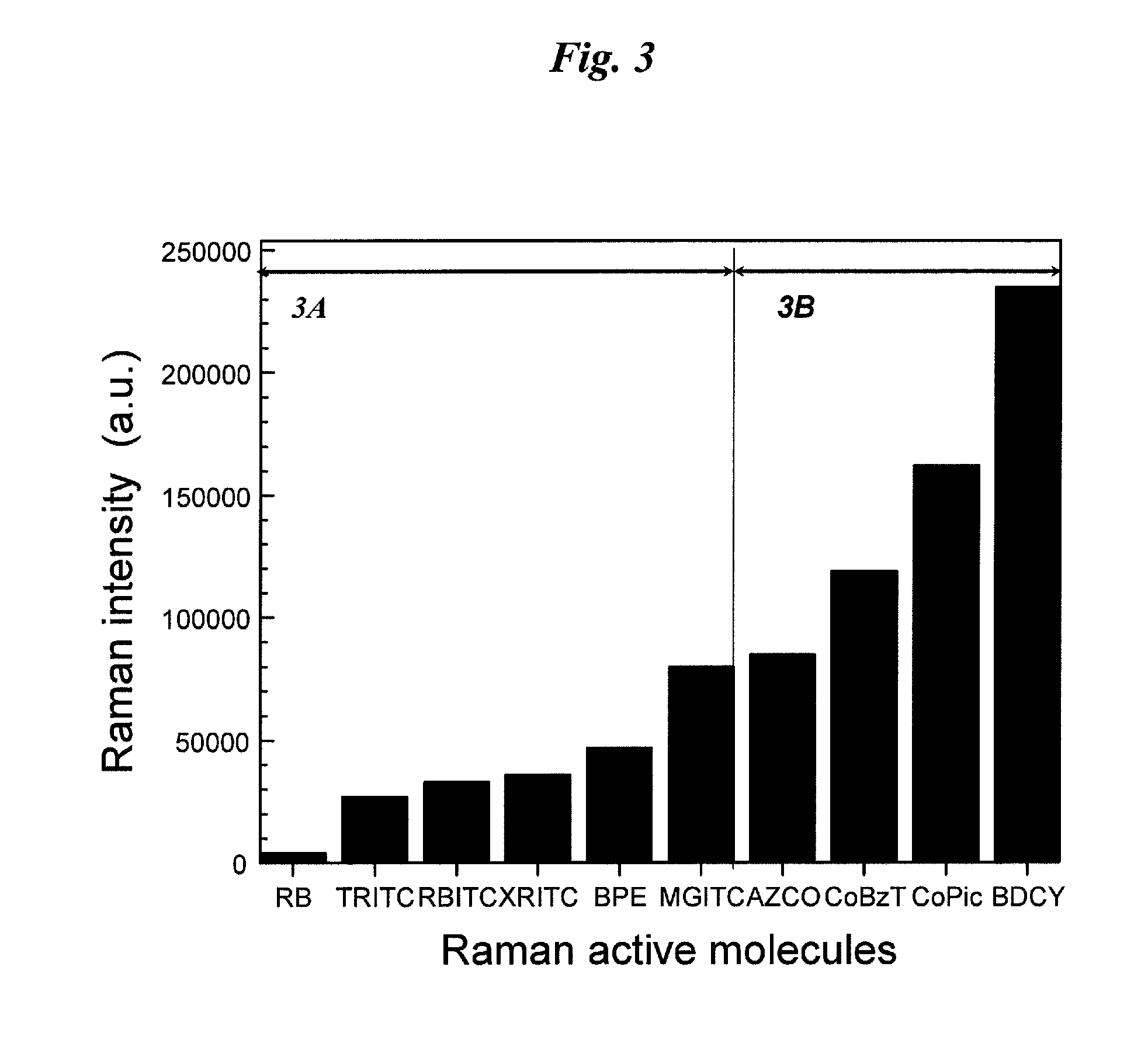Near-infrared dyes as surface enhanced raman scattering reporters
- Summary
- Abstract
- Description
- Claims
- Application Information
AI Technical Summary
Benefits of technology
Problems solved by technology
Method used
Image
Examples
example 1
Preparation of Nanoparticles Having Near-Infrared Dyes Attached Thereto
[0341]Spherical gold nanoparticles with a diameter of 60 nm were purchased from Ted Pella, Inc. (Redding, Calif., United States of America). The size of the nanoparticle as reported by the manufacturer was confirmed by transmission electron microscopy and light scattering. To attach Raman active species, e.g., non-fluorescent molecules and the presently disclosed NIR dyes, to the gold nanoparticles, the chemicals were mixed with gold nanoparticles such that the concentration of the Raman reporter was 10 μM in the final mixture. The gold nanoparticles were concentrated five times from their bulk solution to provide a final optical density equal to five (5) at 520 nm. The reaction was allowed to proceed overnight on a shaker.
example 2
SERS Spectra of Near-Infrared Dyes
[0342]The instrument used for testing the SERS intensity of the presently disclosed SERS-active dyes was a Centice (Morrisville, N.C., United State of America) spectrometer with 660 nm laser excitation. The results of the experiments for a commonly-used non-fluorescent Raman active molecule, e.g., trans-1,2-bis(4-pyridyl)ethylene (BPE) and a presently disclosed NIR dye, e.g., Coumarin picolinium dye (CoPic) appear in FIG. 1. BPE exhibits two major peaks: one peak at approximately 1200 cm−1 and a doublet between 1600 and 1650 cm−1. Similarly, CoPic exhibits two major peaks at approximately 1150 and 1550 cm−1. While the maximum intensity of the most prominent peak in the BPE spectrum is about 47,000, the maximum for CoPic is about 160,000. In this example, the peak maximum for CoPic is approximately three times as intense as that from BPE.
[0343]SERS data obtained for a number of commercially available non-fluorescent Raman molecules and dyes are prese...
example 3
Reduction of Non-Specific Binding in Magnetic Capture Liquid-Based SERS Assays
[0344]DNA oligonucleotides were attached to the surface of SERS-active nanoparticles (gold particles coated with SERS-active reporter molecules, e.g., various bipyridyl dyes, and encapsulated by a thiol-functionalized glass coating) through a polyethylene glycol (PEG) linker molecule. A representative example of one embodiment of the presently disclosed subject matter is illustrated in FIG. 5, which depicts the immobilization of DNA on the surface of SERS-active nanoparticles and magnetic capture particles via a 5-nm heterobifunctional PEG linker molecule.
[0345]The amine-terminated oligonucleotides were reacted with the N-hydroxy-succinimide (NHS) ester moiety of a heterobifunctional polyethylene glycol molecule comprising an NHS ester separated from a thiol-reactive maleimide group by twelve ethylene glycol subunits. Immobilization of PEGylated DNA on SERS-active nanoparticles was accomplished by the reac...
PUM
| Property | Measurement | Unit |
|---|---|---|
| Thickness | aaaaa | aaaaa |
| Thickness | aaaaa | aaaaa |
| Diameter | aaaaa | aaaaa |
Abstract
Description
Claims
Application Information
 Login to View More
Login to View More - R&D
- Intellectual Property
- Life Sciences
- Materials
- Tech Scout
- Unparalleled Data Quality
- Higher Quality Content
- 60% Fewer Hallucinations
Browse by: Latest US Patents, China's latest patents, Technical Efficacy Thesaurus, Application Domain, Technology Topic, Popular Technical Reports.
© 2025 PatSnap. All rights reserved.Legal|Privacy policy|Modern Slavery Act Transparency Statement|Sitemap|About US| Contact US: help@patsnap.com



